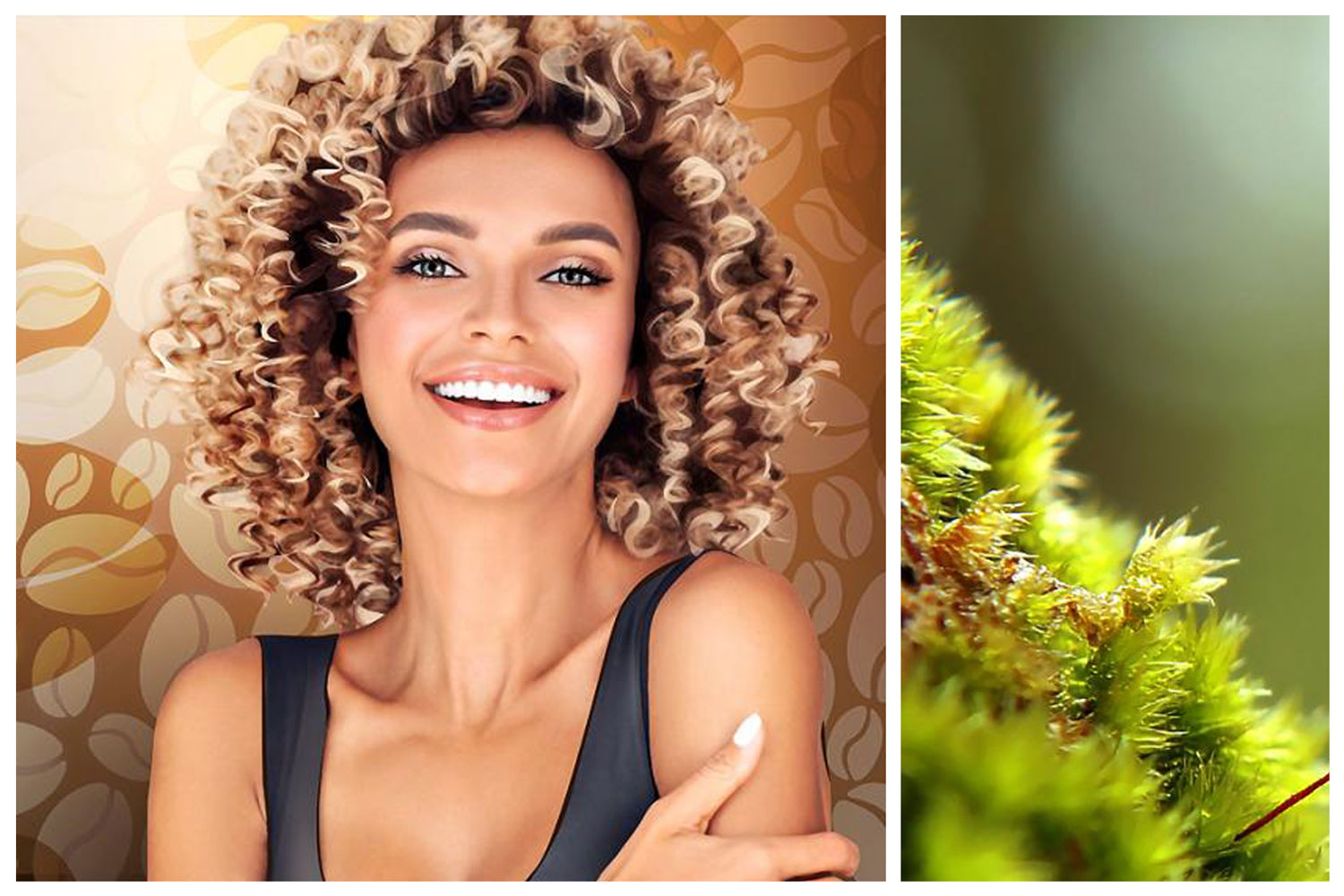This is a translation of my German blogpost Hinter den Beauty-Kulissen… ProTec Ingredia GmbH Proudly Presents: Wirkstoffe für eine starke Hautbarriere. Enjoy!
In cooperation with ProTec Ingredia // Skin barrier beauty has been trending on Instagram and TikTok for a while now. However, unlike the highly concentrated fruit acids or occasionally bizarre skin care hacks shown so frequently on social media, the skin barrier itself is slightly less spectacular. And yet it is very important: If your skin has a resilient barrier it will look and feel good, without irritations, sensitivity or redness. So I’m glad that this topic is now (again) in the limelight! For this new installment of my Beauty Soap, I’ve asked the experts from ProTec Ingredia for tips and ingredient suggestions to help maintain a strong skin barrier. And of course, I will also explain what the skin barrier actually is and how you can support it.
What the skin barrier is
The skin is our largest organ. As a protective shield that surrounds the entire body, it helps prevent excessive moisture loss and protects the body against external pollutants and germs. The skin itself is composed of three layers: the top layer is the epidermis, the middle layer is the dermis and the lowest layer – the deeper subcutaneous tissue – is called the hypodermis.
The epidermis in turn consists of several layers and can regenerate itself. The skin cells (keratinocytes) move from the lowest layer to the top and are turned into dead cells (corneocytes). During this process, lipids such as cholesterol, ceramides and fatty acids are released and attach themselves to the corneocytes. They have the ability to bind enormous amounts of water, helped by some of the skin’s own substances like amino acids or sodium (which are also called Natural Moisturizing Factors).
More complex than a brick wall
Scientists used to believe that the skin barrier looked like a brick wall, with bricks (=corneocytes) evenly arranged and held together by cement (=lipids, i.e. skin fats). However, recent research has revealed that the dense interlinkage of corneocytes and lipids is more complex than that. The corneocytes actually have structures that resemble hooks or clamps and the long-chained lipids are present in a double layer. The corneodemosomes which act as cell junctions also play an important role in an effective skin barrier, as do the so-called tight junctions that support the contact between cells.
The top-most protective layer of the epidermis is called stratum corneum (the cornified layer) and this is the skin barrier. If the barrier is intact, the skin’s moisture levels will be in balance, protecting it against harmful substances. By the way, don’t confuse the skin barrier with the skin’s hydro-lipid film which lies on top of the skin surface and consists mostly of skin lipids and sweat. Together with the microbiome – the multitude of microorganisms that live on human skin – this hydro-lipid film helps to support the skin’s barrier function.
When the skin barrier is weakened
The skin barrier acts as the border between our body and the outside world and is in constant contact with the environment, protecting us from external influences such as wind, UV radiation, heat or cold as well as chemical compounds. If the skin barrier is damaged – i.e. because it lacks lipids such as ceramides or fatty acids – the transepidermal water loss of the skin will increase and it will become more sensitive to external influences.
And then you can see the effects – reddened or inflamed skin patches, for example, itchiness, pale and/or flaky skin or dehydrated/hypersensitive skin. Impurities can also be a sign that the skin barrier has been weakened: Lack of hydration can cause keratinization disorders, resulting in clogged pores or increased sebum production.
What to do about a weak skin barrier
There are many reasons why a skin barrier might be damaged. Typical reasons include a lack of sleep, stress, smoking, poor nutrition or pollutants that have entered the skin or excessive UV exposure. The skin’s barrier function can also be weakened by aggressive cleansing routines, hot water, using too many skin care actives or over-treating the skin with too many beauty products and ingredients. There are also genetic causes.
My recommendation is to try and feel what your own skin needs. I usually make sure to cleanse my skin with mild products and lukewarm water and will use peelings only if my skin feels strong and resilient. I also make sure that my skin receives sufficient – but not too much – hydration. However, there are also ingredients that can help strengthen the skin barrier as the ProTec Ingredia team told me.
How oat strengthens the skin barrier
Ceramides, phospholipids and essential fatty acids can help restructure the skin’s barrier layer. A star ingredient and absolute classic is the Ecocert-certified Oat Lipid e from Oat Cosmetics. This oily active ingredient contains a high percentage of linoleic acid which forms an essential part of the stratum corneum and can help to increase the skin’s production of ceramides. Since linoleic acid also improves the fluidisation of the barrier layer it can counteract a tendency towards keratinization disorders. Oat Lipid e’s high amount of phospholipids helps to bind water in the skin and therefore supports the barrier function. The oil also contains skin-identical ceramides – i.e. essential barrier components – which are otherwise difficult to integrate into cosmetic products.
The active ingredient AvenaPLex from Oat Cosmetics is a special oily oat extract with a particularly high content of skin-identical bioavailable ceramides and phospholipids. Research has shown that AvenaPLex improves the skin’s lipid barrier and reduces moisture loss: Oat Cosmetics was able to prove that the percentage of ceramides in the skin grew by 10%. At the same time, AvenaPLex boosts the skin’s hyaluronic acid production. Avenanthramides – which only occur in the oat plant – additionally help to reduce stress reactions and redness in the skin.
Coffee silver skin and moss for strong skin
But nature offers even more active ingredients for a strong skin barrier. SLVR’Coffee™ from Mibelle Biochemistry is based on an extract of coffee silver skin, the ultra-thin protective layer of the coffee bean which is sloughed off during the roasting process. Coffee silver skin contains the fatty acid esters cafestol linoleates and kahweol linoleates which are turned into cafestol and kahweol (as well as free fatty acids) by the skin’s own enzymes. These substances protect the skin barrier, have anti-inflammatory properties and help to retain moisture in the skin, making this ingredient ideal for sensitive skin types.
The water-soluble moss-based active ingredient MossCellTec™ No.1 from Mibelle Biochemistry is tackling the weak skin barrier from a different angle. Studies have shown that the moss extract improves the health of cell nucleus in aged skin cells. The extract stimulates the markers which are essential for optimal barrier function and skin hydration. MossCellTec™ No.1 also decreases transepidermal water loss and therefore boosts the skin barrier.
Algae to help defend the skin barrier
Marine active ingredients can also help to regenerate a weak skin barrier more quickly. French ingredients manufacturer Codif was inspired by the defense mechanism of the single-cell microalgae Emiliania huxleyi in the production of its water-soluble active ingredient Idaskin. Emiliania huxleyi has extraordinary genetic adaptability and is therefore highly resilient to negative environmental influences. Oxidative stress caused by environmental effects damages the proteins in the cells, not just in algae but also in our skin. Idaskin helps to regenerate the barrier after it has been exposed to external stressors such as UV exposure, so skin can more easily regain its balance.
Besides the environmental impact, skin ageing also has a significant effect on barrier function since older skin has more difficulties regenerating itself after oxidative stress or inflammation. The highly concentrated oil-soluble algae extract Goldella from Codif counteracts tissue-damaging inflammation in the skin. A single drop of Goldella contains the regenerative properties of four billion cells of the microalgae Chlorella vulgaris. The antioxidant ingredient regenerates the skin barrier as well as the deeper skin layers, improves cell vitality and makes skin look younger.
In Germany, the cosmetic ingredients of Oat Cosmetics, Mibelle Biochemistry and Codif are available through the German distributor ProTec Ingredia for trade customers.
© Pictures 2, 3 and 4: Copyright by Oat Cosmetics, Mibelle Biochemistry and Codif. The images were supplied for the purpose of this article.
In the next chapter of my Beauty Soap things get puzzling… Stay tuned!





